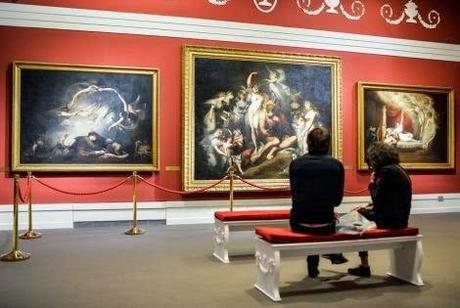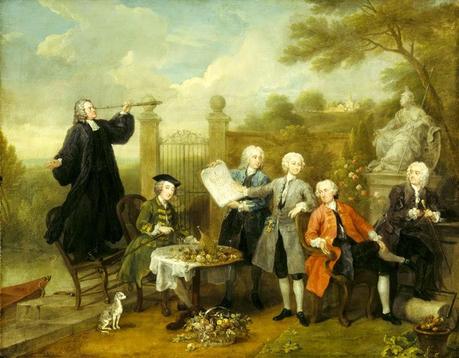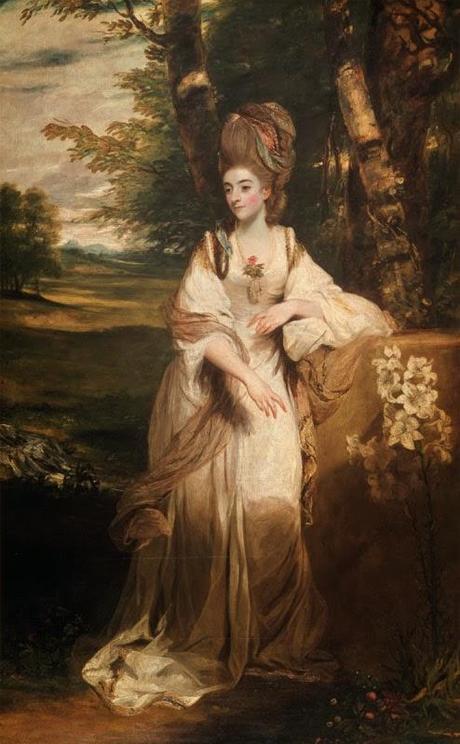 Easter Holidays have been an occasion to catch up with things I love, like going to Rome, visiting friends and play the tourist. Besides walking around the city center in sunny, stunning Rome and have a good time with my friends, I could visit an interesting exhibition promoted by Fondazione Roma: Hogarth, Reynolds, Turner - British painting and the Rise of Modernity. The Foundation presents a fascinating itinerary to discover the characteristics and originality of 18th century English art which has not been shown completely in Rome since 1966. The exhibition offers to the public a comprehensive overview of the social and artistic development that took place during the XVIII centruy in step with the hegemony gained by Great Britain at the historical, political and economic level.
Easter Holidays have been an occasion to catch up with things I love, like going to Rome, visiting friends and play the tourist. Besides walking around the city center in sunny, stunning Rome and have a good time with my friends, I could visit an interesting exhibition promoted by Fondazione Roma: Hogarth, Reynolds, Turner - British painting and the Rise of Modernity. The Foundation presents a fascinating itinerary to discover the characteristics and originality of 18th century English art which has not been shown completely in Rome since 1966. The exhibition offers to the public a comprehensive overview of the social and artistic development that took place during the XVIII centruy in step with the hegemony gained by Great Britain at the historical, political and economic level. Over one hundred works belonging to the most significant museums such as the British Museum, Tate Gallery, The Victoria & Albert Museum, the Royal Academy, the National Portrait Gallery, the Museum of London and the Uffizi Gallery are accompanied by a nucleus of works from the important American collection belonging to the Yale center of British Art.
Over one hundred works belonging to the most significant museums such as the British Museum, Tate Gallery, The Victoria & Albert Museum, the Royal Academy, the National Portrait Gallery, the Museum of London and the Uffizi Gallery are accompanied by a nucleus of works from the important American collection belonging to the Yale center of British Art.The exhibition offers plenty of information about the works and their social-historical context via multimedia spots in all the halls.
During the eighteenth century England became an authentic international power, leader of the Industrial Revolution and the domination of the sea routes and thus raised the issue of establishing a British artistic school for the first time. The rise of a new middle-class brought by such richness in culture and art: the rise of the novel, of the journals, successful theatre, gorgeous architecture as well as visual arts and music.
 The economic development lead by Great Britain generated a new bourgeoisie which included professionals, industrialists, merchants, scientists and philosophers who, having found that visible arts, considerably affirmed their new social status, became patrons of those masters who over the century contributed to the establishment of a national school. the exhibition is divided into seven sections featuring a selection of works by the most significant English painters such as Hogarth, Reynolds, Gainsborough, Wright of Derby, Stubbs, Fuseli, Constable and Turner.
The economic development lead by Great Britain generated a new bourgeoisie which included professionals, industrialists, merchants, scientists and philosophers who, having found that visible arts, considerably affirmed their new social status, became patrons of those masters who over the century contributed to the establishment of a national school. the exhibition is divided into seven sections featuring a selection of works by the most significant English painters such as Hogarth, Reynolds, Gainsborough, Wright of Derby, Stubbs, Fuseli, Constable and Turner.The retrospective mainly aims to document the portrait and landscape genres that prospered during the century, creating a figurative language capable of interpreting modernity, which then became a reference throughout Europe during the nineteenth century.
I liked the exhibition very much, though I felt my expectations were a bit disappointed in the end by the quantity not the quality of the works exhibited. I was out in little more than an hour and I stopped at any information point to discover more about the paintings, their subjects and artists. Anyway, worth visiting if you are interested in British painters. It is not often possible to find them in Rome.
Visit the official site

